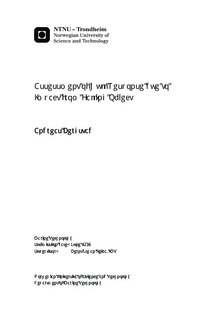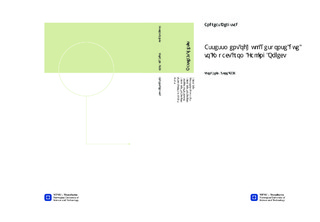| dc.description.abstract | The present study assesses ship hull response of a platform supply vessel due to impact from falling objects. This is carried out primarily by investigating the critical energy absorption and localised deformation to penetration of the deck structure subjected to impact by a falling container. This is made possible by conducting contact simulations with the nonlinear finite element solver Abaqus/Explicit., i.e. explicit time integration of elemental equations of motion by use of the central difference method. Absorbed energy is quantified by integrating the obtained deck resistance/contact force with respect to the deformed distance/indentation. For simplicity the container is assumed infinitely rigid, i.e. kinetic energy from impact is solely absorbed by the deck.A comparison is made between two steel configurations (conventional ship building steel and Hardox steel) to investigate the possibilities for improved strength, as this can decrease the risk of damage infliction to a liquefied natural gas fuel tank located beneath deck.Det Norske Veritas rules and standards for application in accidental limit state design are reviewed with particular interest in recommended procedures for dimensioning hull structural members to withstand impact loads. The principle of shared energy dissipation between two colliding bodies is presented analytically. Dimensioning load from a dropped object can be determined, e.g. based on the maximum load capacity of an eventual deck crane. Recommended further, is the application of nonlinear finite element analysis.A variety of simplified fracture models are reviewed, with specific interest in their ability to predict ductile failure of metal alloys. Dependence of stress triaxiality, plastic stress-strain relation, geometry and size, and strain rate is investigated in relation to the different models. Nonlinear material behaviour is defined in the finite element model, including true stress-strain relations, strain rate dependence and fracture criteria. The onset of fracture is modelled by introducing an empirical element length-related constant strain fracture criterion in the material definition for conventional steel. Applications of fracture criteria for Hardox steel were not discovered. This led to the narrow definition of one constant value for strain to fracture, as specified in the obtained material parameters. Adjusting yield strength due to strain rate dependence is included by application of the Cowper-Symonds constitutive equation. Parameter variations of strain rate coefficients clearly show large uncertainties in the estimated resistance force-indentation relation.Analytical methods for estimation of resistance in plastic collapse and crushing of structural members are applied in comparison with numerical results. Satisfying results are found in the absorbed energy estimates provided by simplified methods concerning in-plane crushing of web girders. Although not completely accurate, these methods provide physical understanding on how to increase the crushing resistance of girders by increasing web thickness. This is namely because the plastic moment capacity is quadratic dependent on the plate thickness.Hardox steel provides significantly increased capacity in energy dissipation to penetration. However, the specific degree of increase should be verified by further simulations. Experiments of different scale can be compared with numerical analyses, in the aim of discovering a well suited fracture criterion and specifying coefficients applicable in the Cowper-Symonds equation. | nb_NO |

